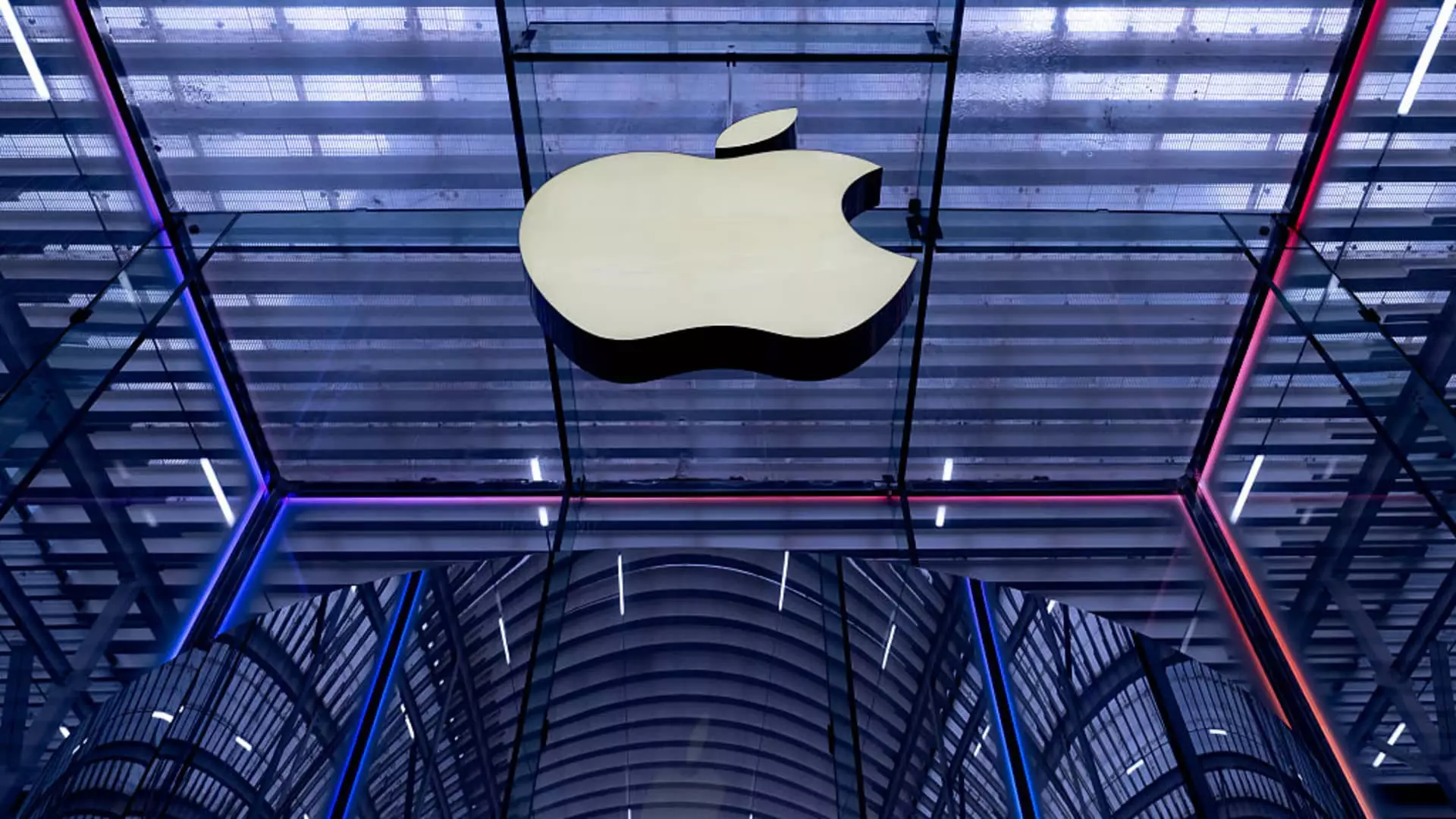As the financial world edges closer to Apple’s third-quarter earnings, the landscape resembles a battlefield fraught with economic headwinds, geopolitical tensions, and shifting consumer behaviors. Wall Street, alongside snapshot predictions from platforms like Kalshi, suggests that discussions around “China,” “Tariff,” and “Severance” will dominate the company’s upcoming conference call. These keywords are not mere footnotes—they encapsulate Apple’s current strategic dilemmas and adjustments. The majority of investors and analysts recognize that, behind the glossy exterior of innovation, Apple is grappling with profound industry and geopolitical disruptions that threaten to reshape its business model.
The emphasis on tariff-related language signals ongoing concerns over tariffs imposed or threatened by the U.S. government, especially relating to China, where the majority of iPhones are assembled. The anticipated mention of “Severance” indicates internal adjustments, possibly layoffs or restructuring, shedding light on Apple’s efforts to streamline operations amid a volatile environment. While the company’s recent moves, including announcing a manufacturing academy and shifting some production to India and Vietnam, are steps toward greater self-reliance, they also underscore the urgency of adapting to geopolitical challenges. Apple’s narrative in this earnings call will likely revolve around measures taken to mitigate risk, though market skepticism remains high.
Manufacturing Shifts and Economic Realities
Apple’s strategic pivot to diversify manufacturing has been well-documented. The move to India, which has already overtaken China in smartphone exports during the second quarter, exemplifies the company’s proactive approach amid rising tariffs and trade restrictions. Yet, these shifts come with a cost: increased complexity, logistical hurdles, and potential reductions in profit margins. Experts warn that U.S.-made iPhones would be significantly more expensive, with price estimates soaring from $1,500 to upwards of $3,500, which could dampen consumer demand at a time when markets are already fragile.
The decision to build manufacturing capabilities in the U.S.—evidenced by the Detroit academy—reflects both a strategic attempt to reduce dependency on China and a desire to appeal to a patriotic narrative. However, this move is a double-edged sword. The higher manufacturing costs might diminish Apple’s competitive edge in price-sensitive markets, especially in China and emerging economies. Moreover, shifting production to countries like India and Vietnam is not just a logistical necessity but also a reflection of ongoing geopolitical and economic pressures that threaten the robustness of Apple’s global supply chain.
Market Sentiment and Future Prospects
Despite these operational efforts, market sentiment paints a cautious, if not slightly dour, picture. Apple’s shares have declined over 16% year-to-date, lagging behind the S&P 500’s positive trajectory. Analysts like Barclays’ Tim Long voice skepticism regarding Apple’s near-term prospects, citing a “rough” macroeconomic climate, stagnant innovation, and increasing market share losses in China.
The absence of groundbreaking product launches further complicates the outlook. Without new features or devices to excite consumers, Apple risks losing further market share and relevance in key segments. The company’s reliance on existing products, coupled with tariffs and manufacturing costs, could compel a price increase that makes their devices inaccessible for many consumers, potentially leading to demand erosion.
Conversely, entertainment offerings such as “Severance” and blockbuster films like “F1: The Movie” provide some optimism. These content successes demonstrate Apple’s potential to diversify revenue streams and build brand loyalty through subscription, streaming, and entertainment. Yet, whether these aspects can compensate for hardware challenges remains uncertain.
The Underlying Struggle for Innovation and Market Leadership
Fundamentally, Apple appears to face the classic dilemma of innovation versus external pressures. The company’s insistence on maintaining premium pricing while contending with rising manufacturing costs and geopolitical risks threatens to erode its competitive edge. The absence of slicing-edge product launches in recent years fuels a perception of stagnation, hampering growth ambitions.
While the company’s moves to diversify manufacturing and expand content are commendable, they may not be enough to sustain its growth trajectory in a challenging macroeconomic environment. The upcoming earnings call will likely reveal a narrative of resilience, but also one of caution. Investors will want to see concrete strategies—not just hopeful projections—to navigate the turbulent waters ahead.
As Apple grapples with these multifaceted challenges, it becomes evident that its strength will lie in its ability to innovate within constraints, adapt quickly to geopolitical shifts, and redefine value for its increasingly diverse consumer base. The upcoming earnings reveal more than just numbers; they serve as a litmus test for whether Apple’s legendary innovation spirit can withstand the storms on the horizon.

